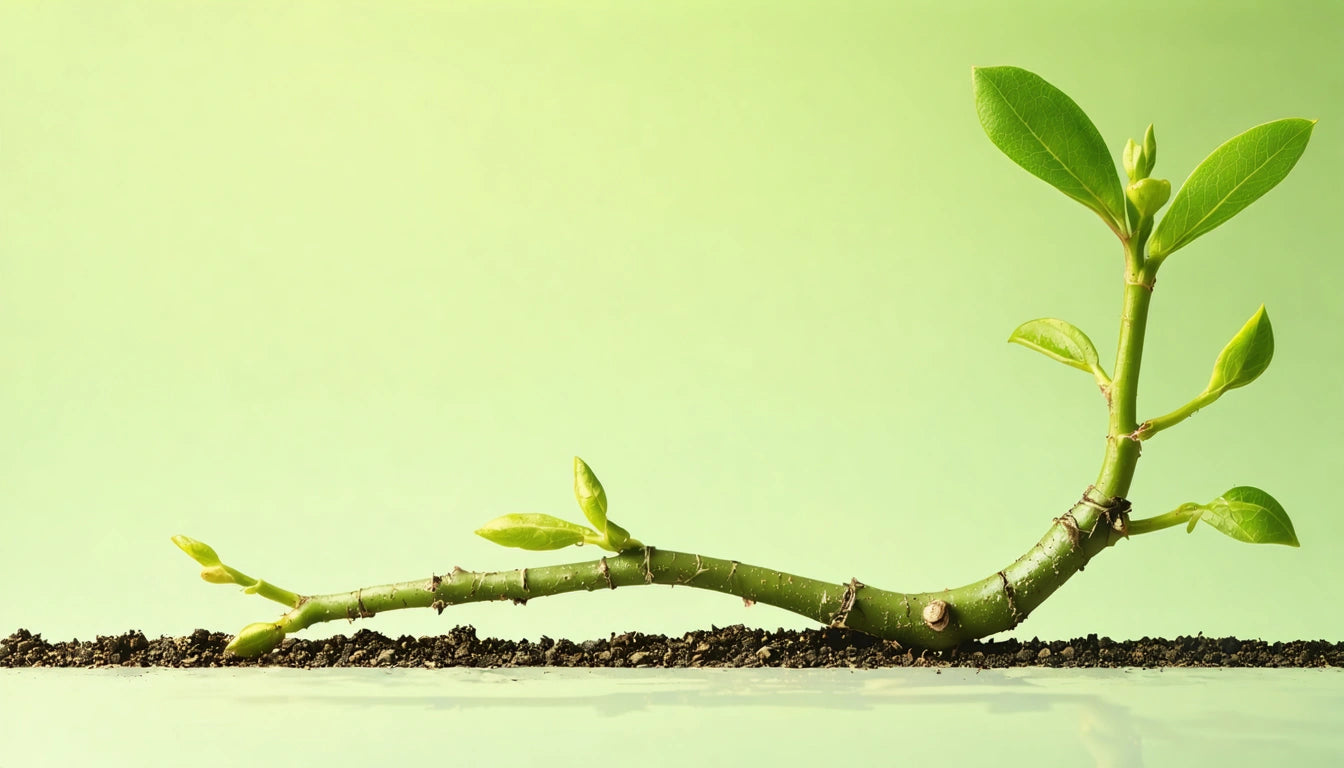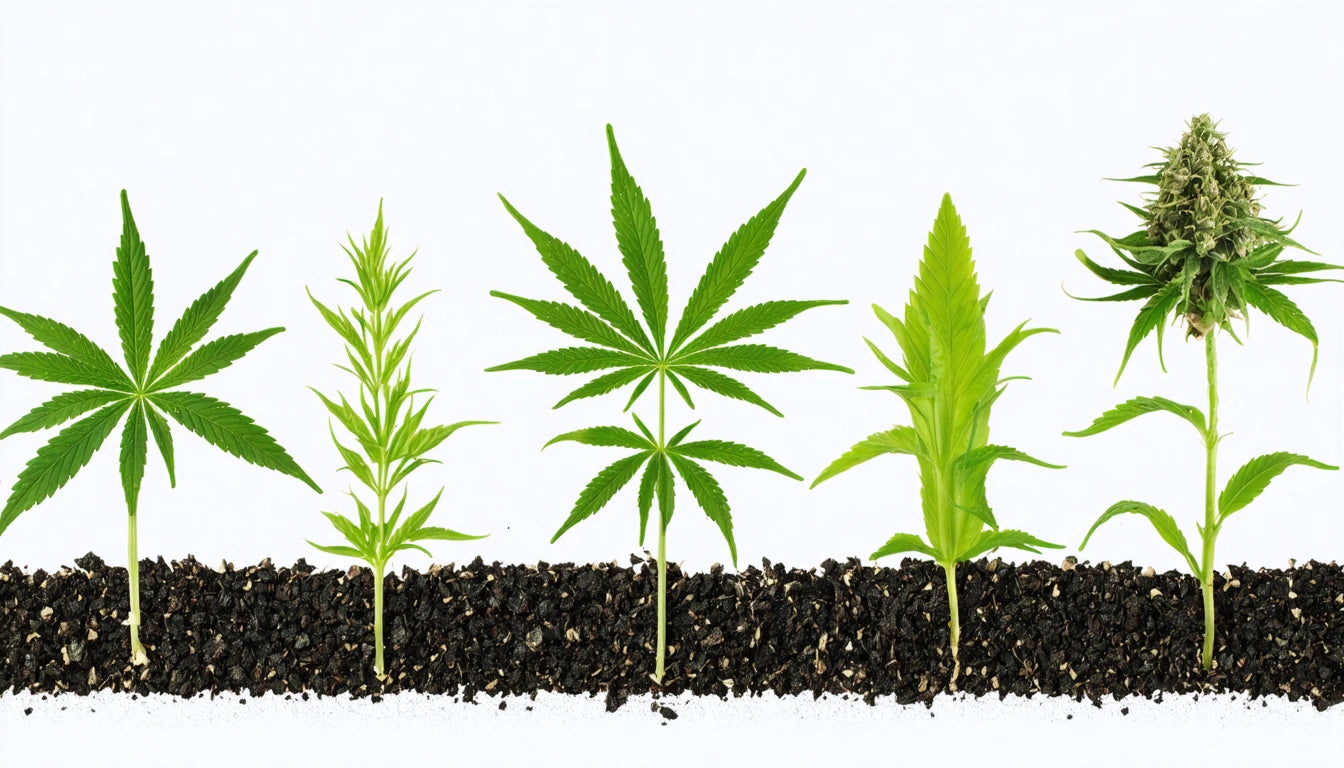Table of Contents
How to Repair and Support a Broken Plant Stem: Tips and Techniques
Discovering a broken stem on your prized plant can be alarming, but with quick action and proper techniques, many plants can make a full recovery. Whether caused by wind, accidental damage, or heavy flowering, stem breaks don't have to be a death sentence for your plants. This guide covers everything from emergency first aid to long-term healing strategies.
Assessing Stem Damage: Can Your Plant Recover?
Before attempting repairs, assess the severity of the break. Plant stems can experience different types of damage:
- Partial breaks - The stem is damaged but still connected, with intact vascular tissue
- Complete breaks - The stem is fully separated but both parts are healthy
- Crushed stems - The stem is damaged with crushing injuries that affect vascular flow
The good news is that if you're wondering "if a plant stem breaks will it grow back," the answer is often yes. Plants have remarkable regenerative abilities, especially when the break is clean and repaired quickly. Woody plants like cannabis can form calluses over wounds and eventually heal completely if properly supported.
Emergency Repair Techniques for Broken Stems
When you discover a broken stem, acting quickly improves recovery chances. Have these supplies ready in your gardening kit:
- Plant tape or grafting tape (breathable and stretchy)
- Clean, sharp scissors or pruning shears
- Small plant stakes or supports
- Twist ties or plant ties
- Clean water for rinsing the wound
The Taping Method: Materials and Application
For most hobbyist gardeners wondering "how to fix a broken plant stem" or "can I tape a broken plant stem," the taping method is the simplest approach:
- Gently align the broken sections, ensuring they match precisely
- Wrap plant tape or grafting tape around the break, starting below and continuing above the damaged area
- Ensure the tape is snug but not cutting into the stem
- Add a support stake if needed to prevent movement
Plant tape works because it's breathable while providing structure. If you're growing cannabis, you might already be familiar with various cultivation supplies from our specialized growing accessories collection that can be repurposed for plant repairs.
The Splinting Approach for Severe Breaks
For more serious breaks, a splint provides additional support:
- Align the broken stem sections
- Place small splints (bamboo skewers, popsicle sticks) on either side of the break
- Secure the splints with plant tape or soft ties
- Ensure the setup allows for some air circulation around the wound
This method is particularly effective for larger stems or plants with heavy foliage above the break point.
Grafting Techniques for Permanent Repairs
For those asking "how do you graft" as a more permanent solution, grafting involves connecting plant tissues to form a lasting union:
- Make clean, angled cuts on both stem sections
- Match the cambium layers (the green tissue just under the bark)
- Secure tightly with grafting tape or grafting clips
- Keep the graft site clean and protected from excessive moisture
Grafting is more advanced but offers better long-term results for valuable plants. It's similar to techniques used in crossbreeding plants and creating hybrids, where precise tissue connections are crucial.
Healing Timeline and Aftercare
Many gardeners ask "how long can I tape a broken plant stem" during the recovery process. The timeline varies by plant type:
- Soft-stemmed plants: 1-2 weeks for initial healing, remove tape after 3-4 weeks
- Woody stems: 3-4 weeks minimum, sometimes up to 8 weeks for complete healing
- Large breaks: May require 2-3 months of support before full recovery
During healing, provide optimal growing conditions:
- Maintain consistent watering without overwatering
- Avoid fertilizing for the first week after repair
- Protect from strong winds and physical disturbances
- Consider increasing humidity around the plant
For cannabis growers, proper stem repair is particularly important during the vegetative stage. Our guide on growing and caring for cannabis plants naturally provides additional insights into optimal plant health during recovery periods.
Prevention Strategies for Stronger Plants
The best repair is prevention. Implement these practices to develop stronger stems and prevent future breaks:
- Proper lighting: Ensure adequate light from all angles to prevent stretching
- Air circulation: Use gentle fans to strengthen stems through natural resistance
- Silica supplements: Add silica to your feeding regimen to build stronger cell walls
- Early training: Implement low-stress training techniques when plants are young
- Proactive support: Use trellises or stakes before plants become top-heavy
When transplanting, follow proper techniques to avoid stem damage. Our article on successfully transplanting seedlings and plants provides valuable insights into this critical process.
Even if stems break beyond repair, all is not lost. You can still make use of plant materials through techniques described in our guide on creative and practical uses for cannabis stems.
With these techniques and a bit of patience, most plants can recover from stem damage and continue to thrive. The key is quick action, proper alignment, and adequate support during the healing process.











Leave a comment
All comments are moderated before being published.
This site is protected by hCaptcha and the hCaptcha Privacy Policy and Terms of Service apply.